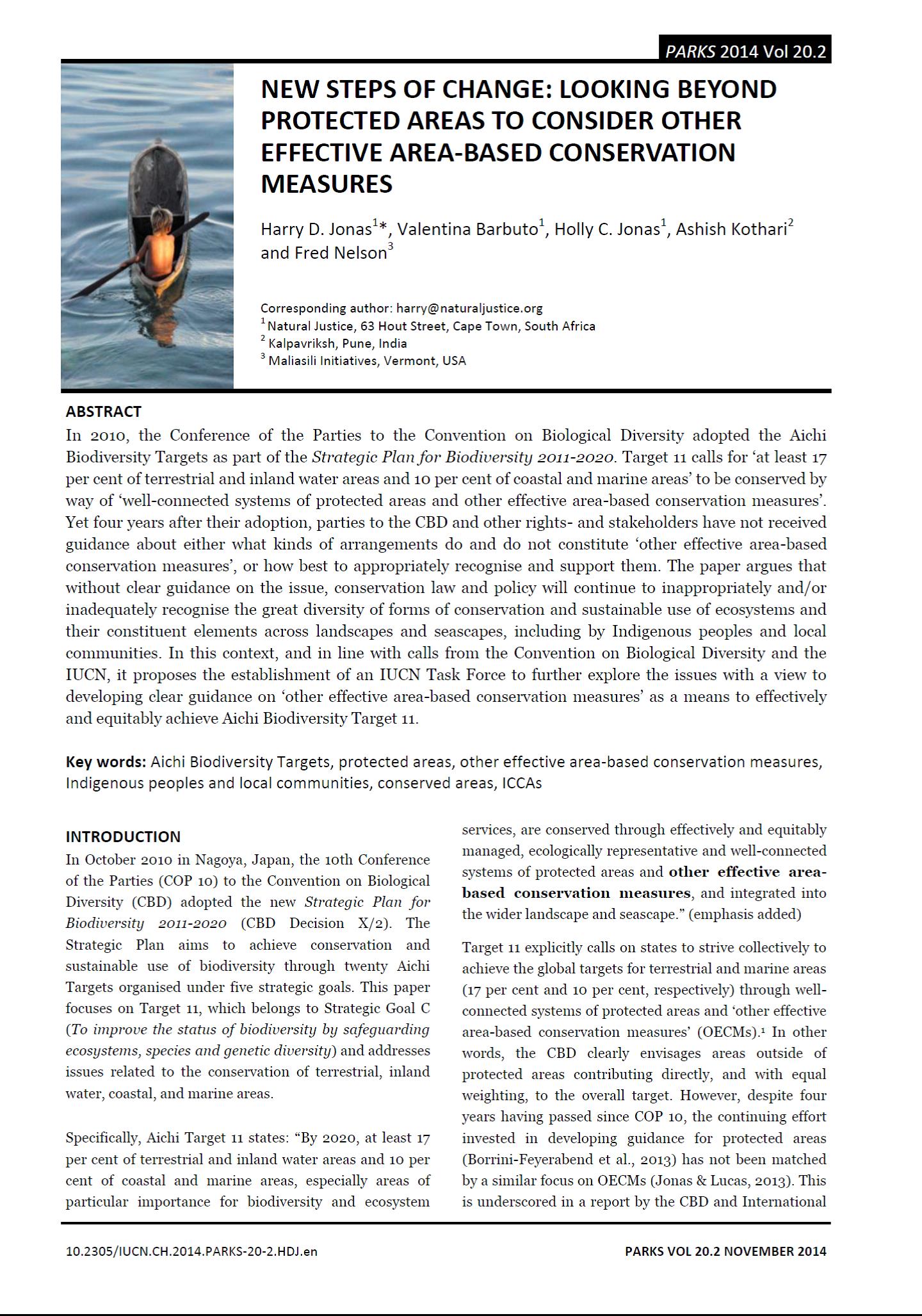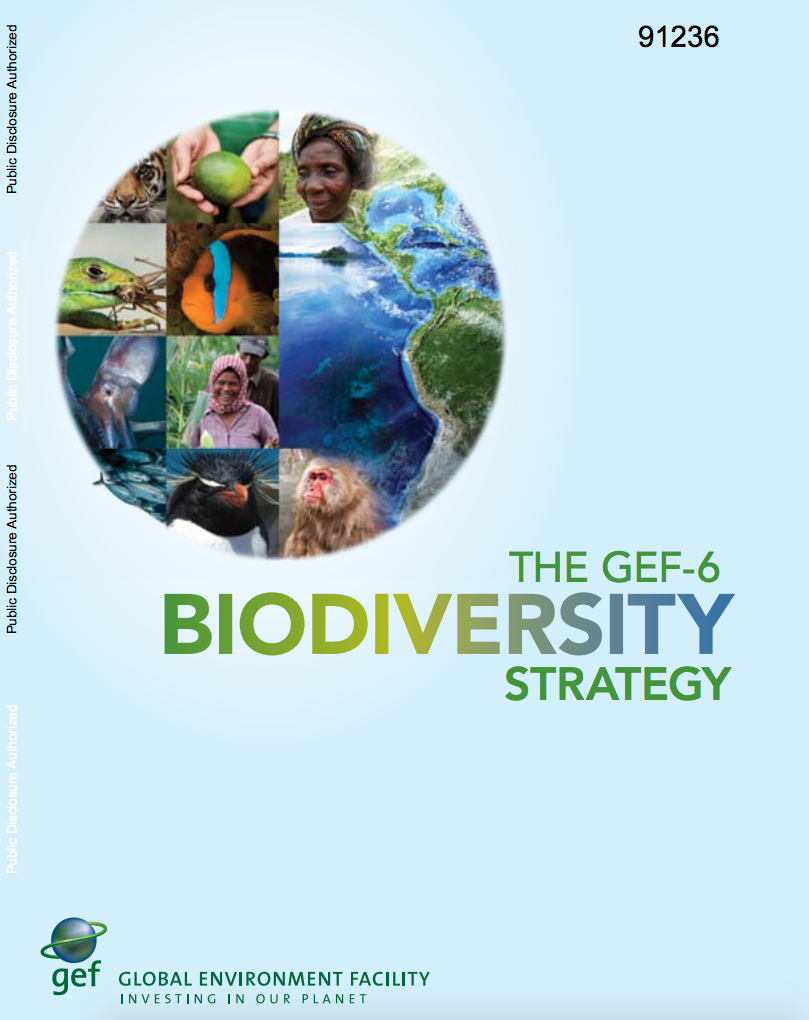
Proportion of important sites for terrestrial and freshwater biodiversity that are covered by protected areas, by ecosystem type
Last updated on 1 February 2022
This indicator is currently classified as Tier I. The United Nations Environment Programme (UNEP) is the Custodian agency for this indicator.
Unit of measure: Mean percentage of each terrestrial and freshwater Key Biodiversity Area covered by (i.e. overlapping with) protected areas and/or Other Effective Area-based Conservation Measures
Sub Indicators: Average proportion of Freshwater Key Biodiversity Areas (KBAs) covered by protected areas (%), Average proportion of Terrestrial Key Biodiversity Areas (KBAs) covered by protected areas (%)
Why is this indicator important?
To bring the global decline in biodiversity to a halt and secure a long-term and sustainable use of terrestrial and freshwater natural resources, it is crucial to safeguard important sites. Establishing protected areas is an essential mechanism to reach this objective. SDG Indicator 15.1.2 measures progress toward the conservation, restoration and sustainable use of terrestrial and freshwater ecosystems and their services, in accordance with international agreements.
How is the indicator measured and monitored?
SDG indicator 15.1.2 measures the proportion of important sites for terrestrial and freshwater biodiversity that are covered by protected areas, by ecosystem type. Data derived from a spatial overlap between digital polygons for protected areas from the World Database on Protected Areas, digital polygons for Other Effective Area-based Conservation Measures (OECMs) from the World Database on OECMs, and digital polygons for terrestrial and freshwater Key Biodiversity Areas (from the World Database of Key Biodiversity Areas, including Important Bird and Biodiversity Areas, Alliance for Zero Extinction sites, and other Key Biodiversity Areas) is the basis for the calculation of the indicator. Protected areas are defined by IUCN as clearly defined geographical spaces, recognized, dedicated and managed, through legal or other effective means, to achieve the long-term conservation of nature with associated ecosystem services and cultural values.
According to the metadata document, the value of the indicator at a given point in time, based on data from the year of protected area establishment recorded in the World Database on Protected Areas, is computed as the mean percentage of each Key Biodiversity Area currently recognized. Disaggregation is available by national, regional, and global levels and ecosystem types. The indicator does not encompass degazetted sites that are not listed in the World Database of Protected Areas, as well as ‘proposed’ or ‘not reported’ sites and protected areas lacking digital boundaries.
International organizations responsible for global monitoring are the United Nations Environment World Conservation Monitoring Centre (UNEP-WCMC), BirdLife International (BLI), and the International Union for Conservation of Nature (IUCN).
By Anne Hennings, peer-reviewed by UNEP.
Official indicator data
Proportion of important sites for terrestrial and freshwater biodiversity that are covered by protected areas, by ecosystem type. This dataset provides a percentage of the mean proportion of Key Biological Areas (KBA) that are protected for their environmental values in both terrestrial ecosystems and freshwater ecosystems. * Select "year" below to see the most recent data for more countries. ** To refresh the map with other official data, use the ’Select an indicator field’. Type in the other indicators titles, as given in the table below.
| Indicator | Min-Max Number of years |
Countries / Obs | Min / Max Value |
|---|---|---|---|
| Average proportion of Freshwater Key Biodiversity Areas (KBAs) covered by protected areas (%) | |||
| Average proportion of Terrestrial Key Biodiversity Areas (KBAs) covered by protected areas (%) |
Other related indicators on Land Portal
Other related data: In addition to the official indicator data, the following indicators provide information related to terrestrial and marine protected areas and community or indigneous land rights in protected areas.
| Indicator | Min-Max Number of years |
Countries / Obs | Min / Max Value |
|---|---|---|---|
| Marine protected areas (% of territorial waters) | |||
| Terrestrial and marine protected areas (% of total territorial area) | |||
| Terrestrial protected areas (% of total land area) | |||
| X - Land Rights in protected areas - Community Lands | |||
| X - Land Rights in protected areas - Indigenous People |
Paginering
Where now for protected areas? Setting the stage for the 2014 World Parks Congress
Protected areas are regarded as the most important tool in the conservation toolbox. They cover >Â 12% of the Earth's terrestrial area, with over half of this designated since 1970, and are thus a unique example of governments and other stakeholders consciously changing management of land and water at a significant scale.
Miami-Dade County's Environmentally Endangered Lands Covenant Program: Creating Protected Areas on Private Lands via Financial Incentives
We review Miami-Dade County's Environmentally Endangered Lands (EEL) Covenant Program as a means to create protected areas on private property via financial incentives. Such incentives go a step beyond regulatory and fee simple approaches to conservation. The program is codified under Chapter 25B, Article II, of the Miami-Dade County Code as authorized by section 193.501, Florida Statutes.
Satellite monitoring of land-use and land-cover changes in northern Togo protected areas
Remote-sensing data for protected areas in northern Togo, obtained in three different years (2007, 2000, and 1987), were used to assess and map changes in land cover and land use for this drought prone zone. The normalized difference vegetation index (NDVI) was applied to the images to map changes in vegetation.
New Steps of Change: Looking Beyond Protected Areas to Consider other Effective Area-based Conservation Measures
In 2010, the Conference of the Parties to the Convention on Biological Diversity adopted the Aichi Biodiversity Targets as part of the Strategic Plan for Biodiversity 2011-2020.
The GEF-6 Biodiversity Strategy
The Convention on Biological Diversity
(CBD) defines biodiversity as the variability among living
organisms from all sources including, inter alia,
terrestrial, marine and other aquatic ecosystems and the
ecological complexes of which they are part; this includes
Paginering
![]()

By 2020, ensure the conservation, restoration and sustainable use of terrestrial and inland freshwater ecosystems and their services, in particular forests, wetlands, mountains and drylands, in line with obligations under international agreements
Indicator details
The Indicator is conceptually clear, has an internationally established and available methodology and standards, and that data is regularly produced by countries for at least 50 per cent of countries and of the population in every region where the indicator is relevant.
Key dates:




